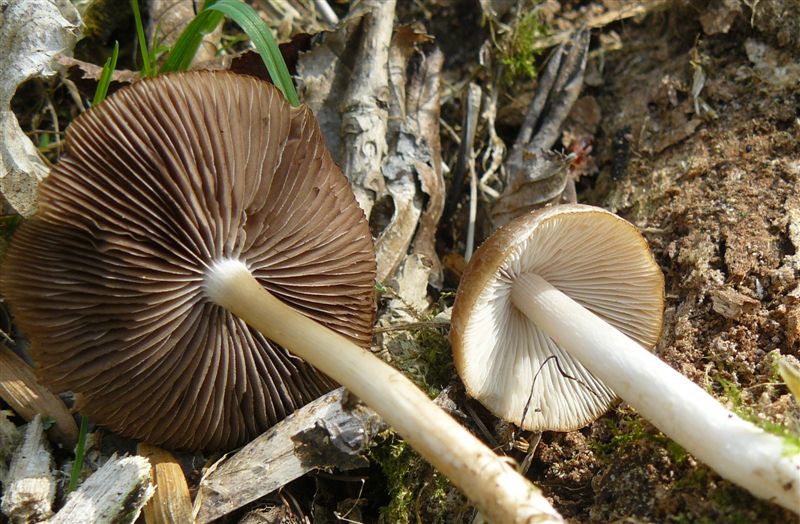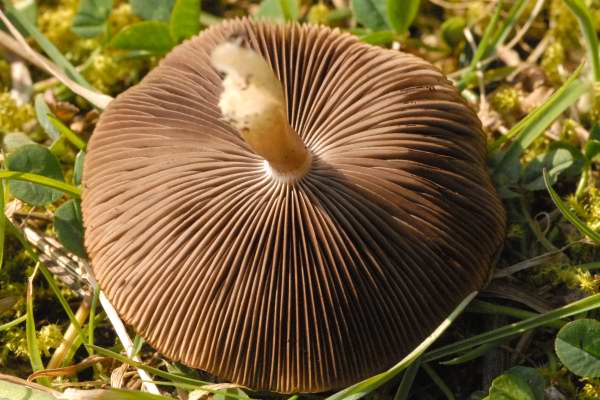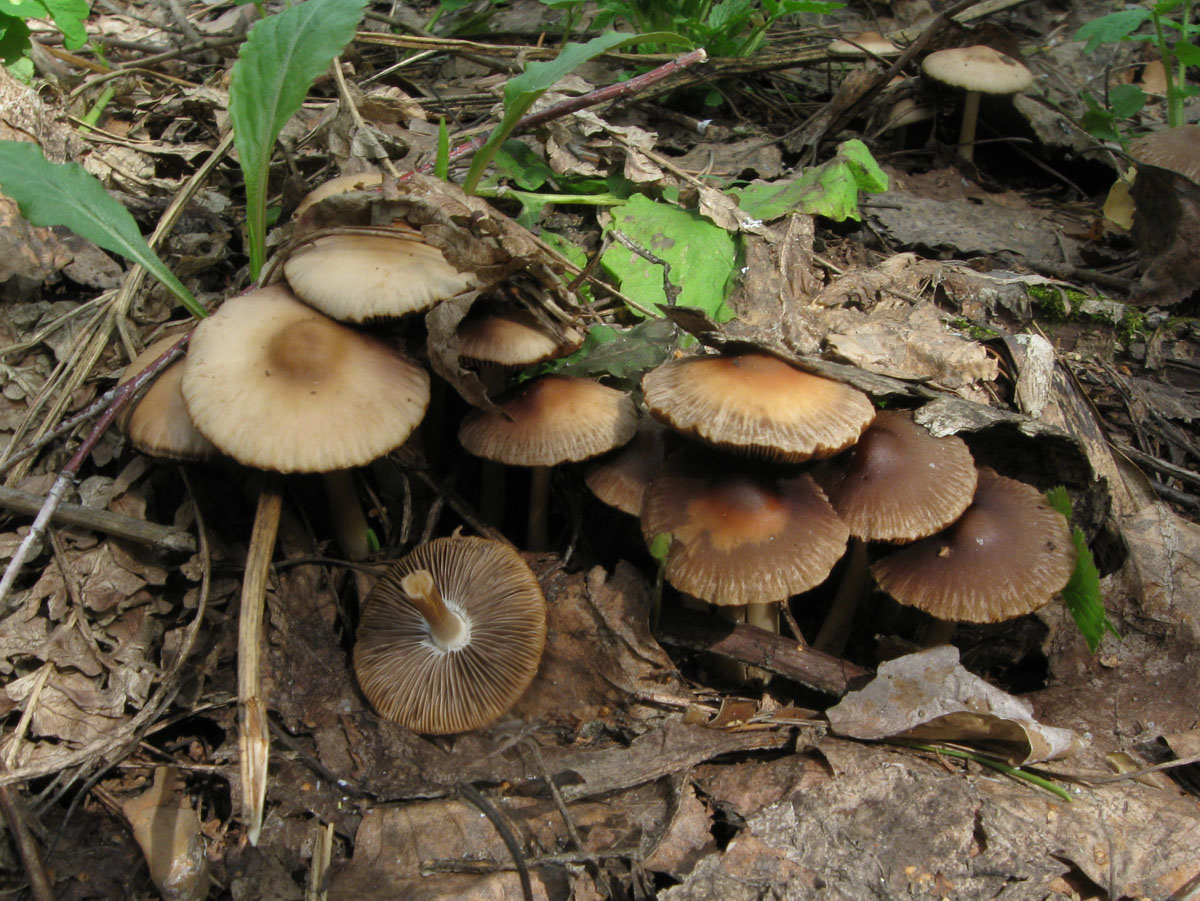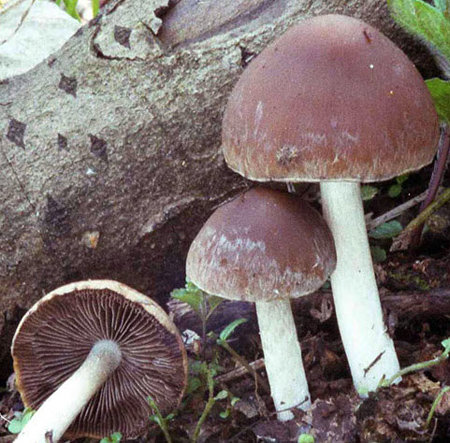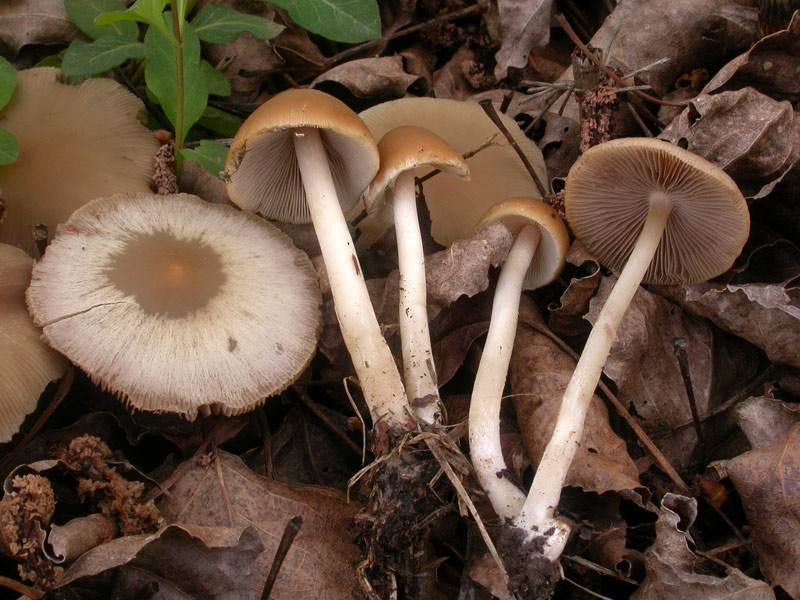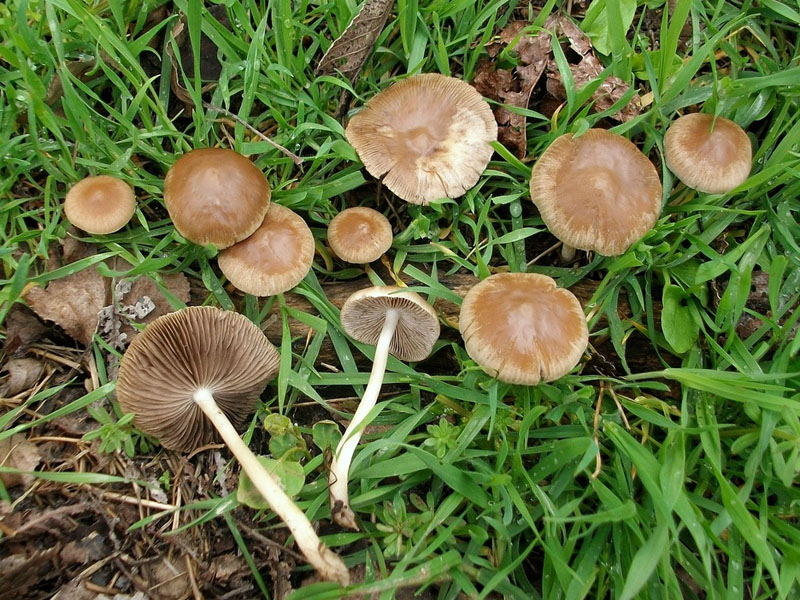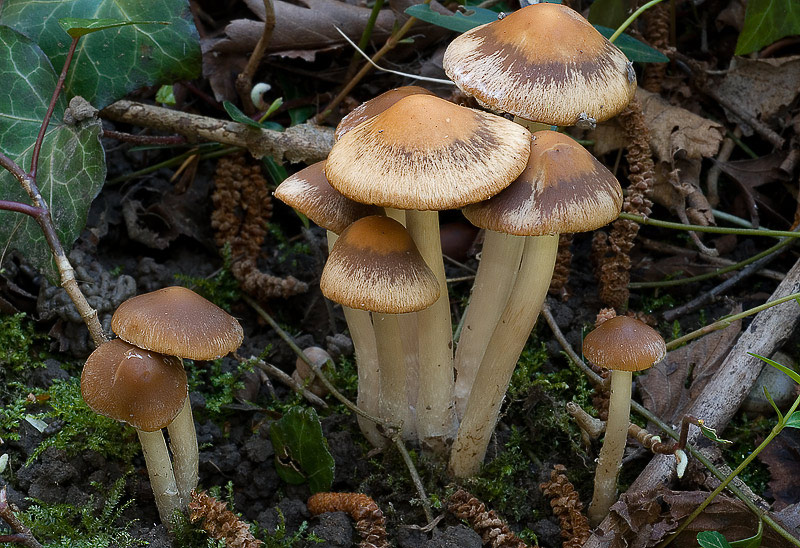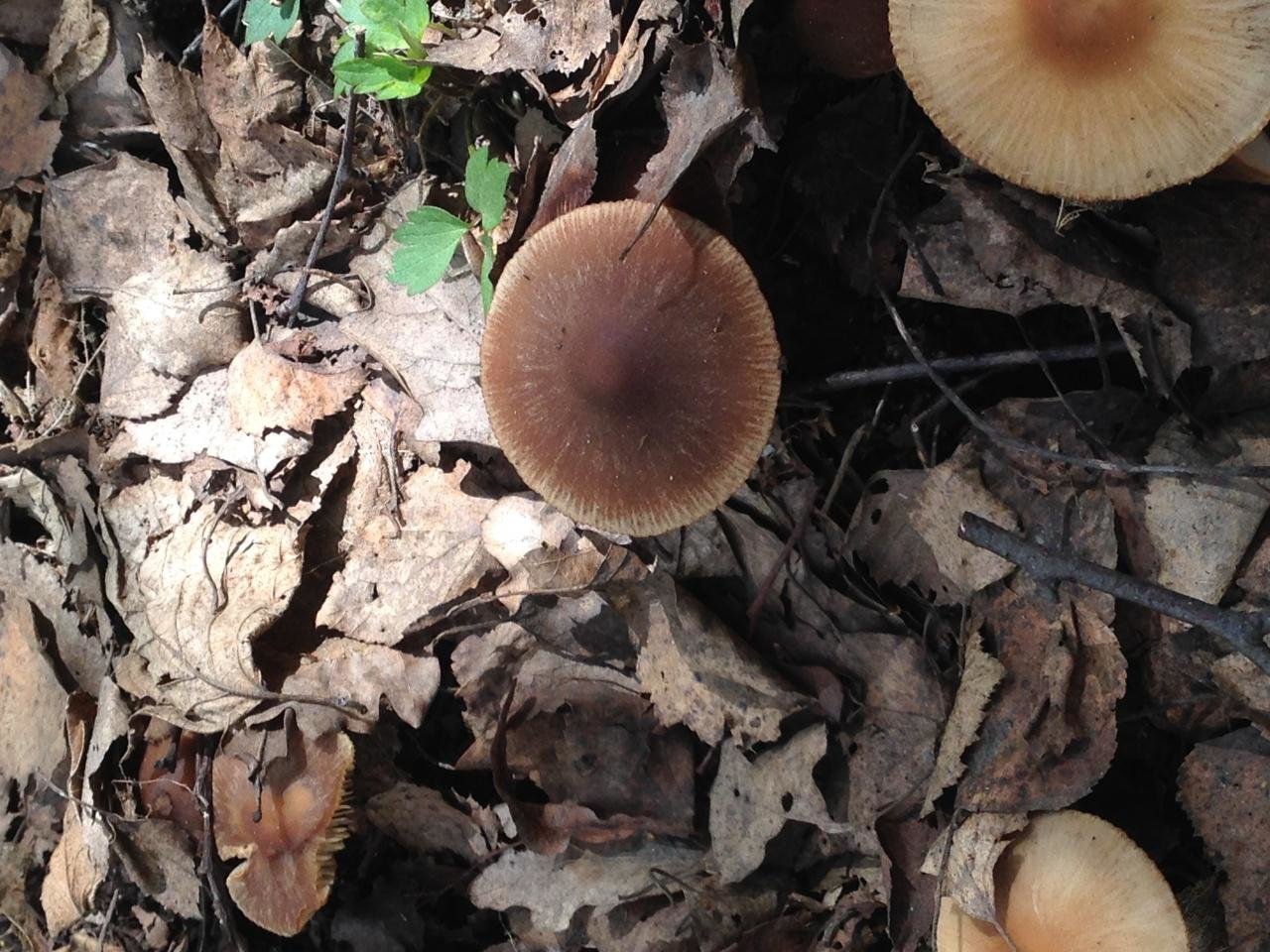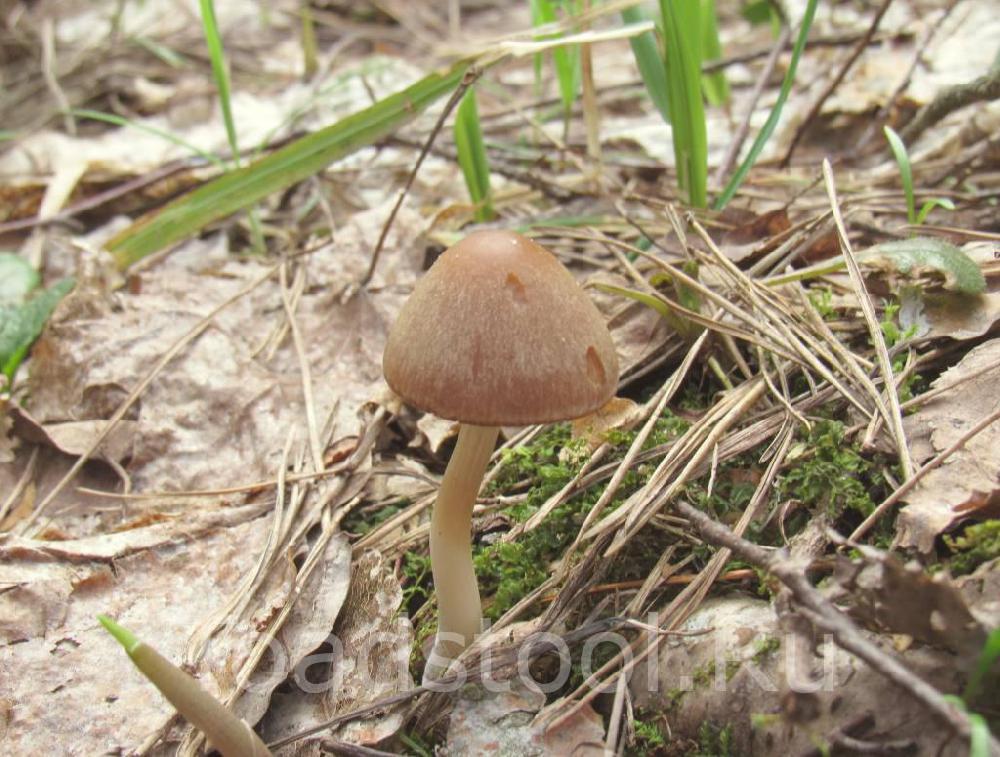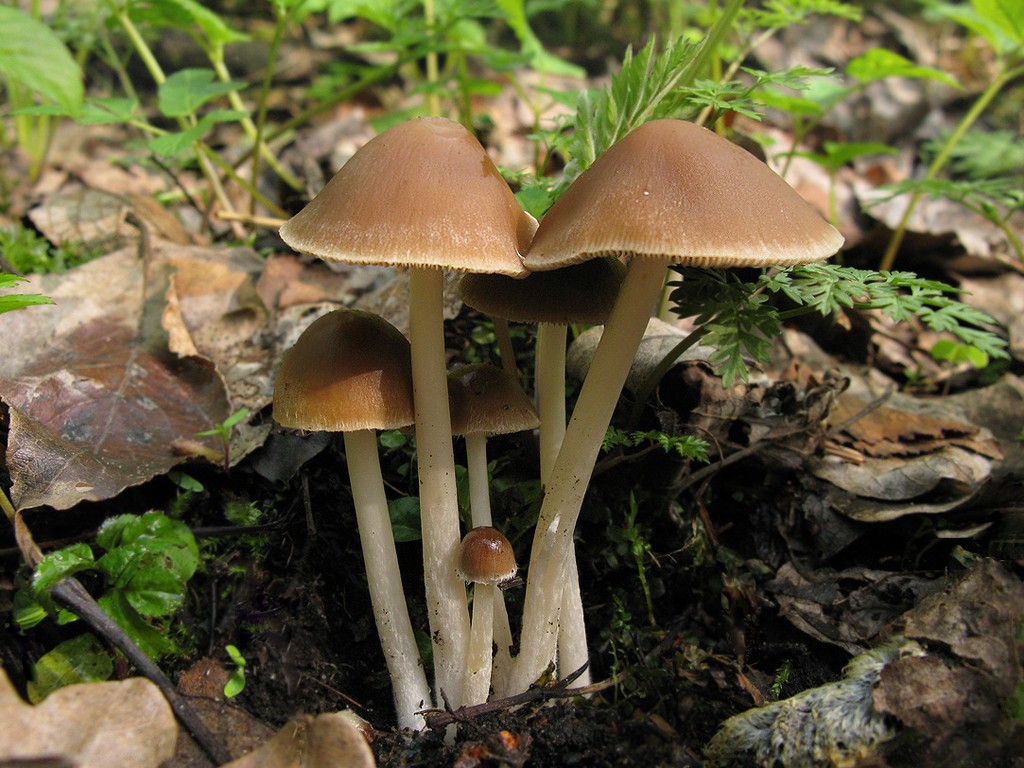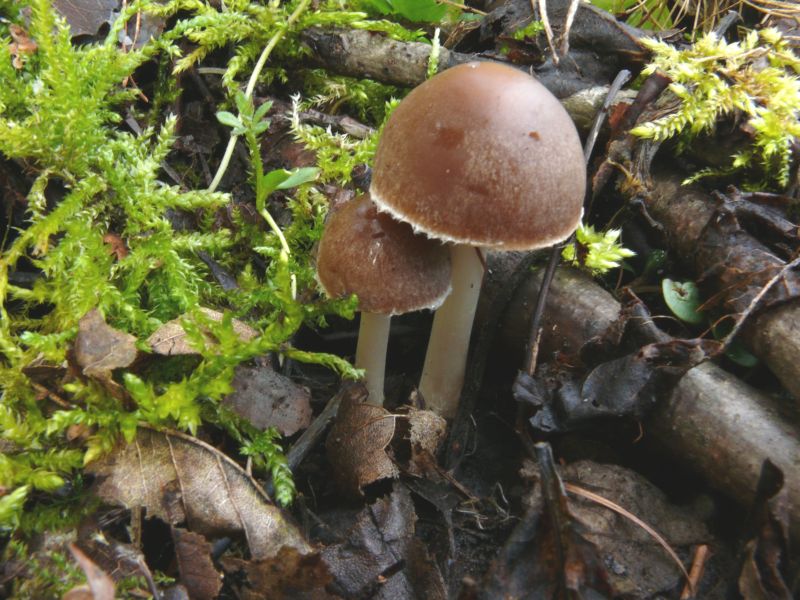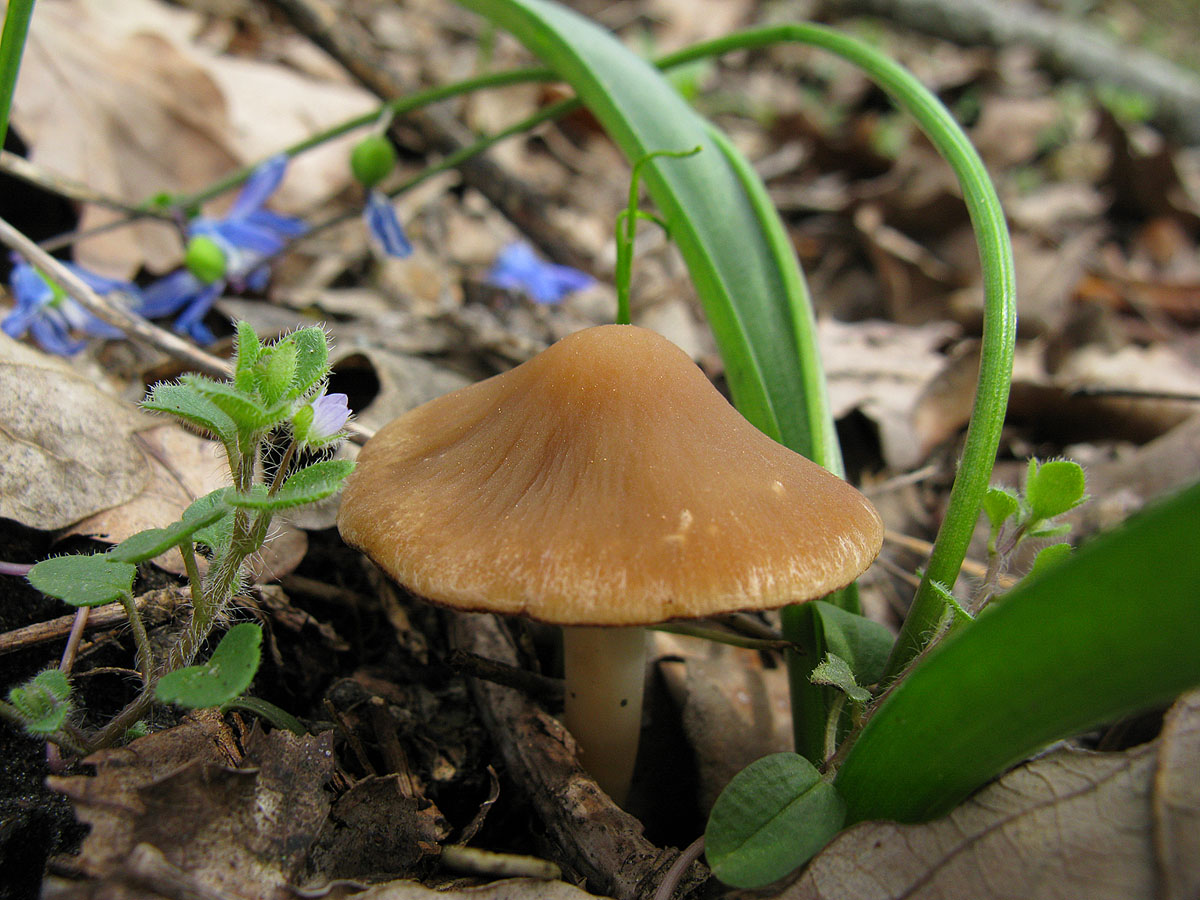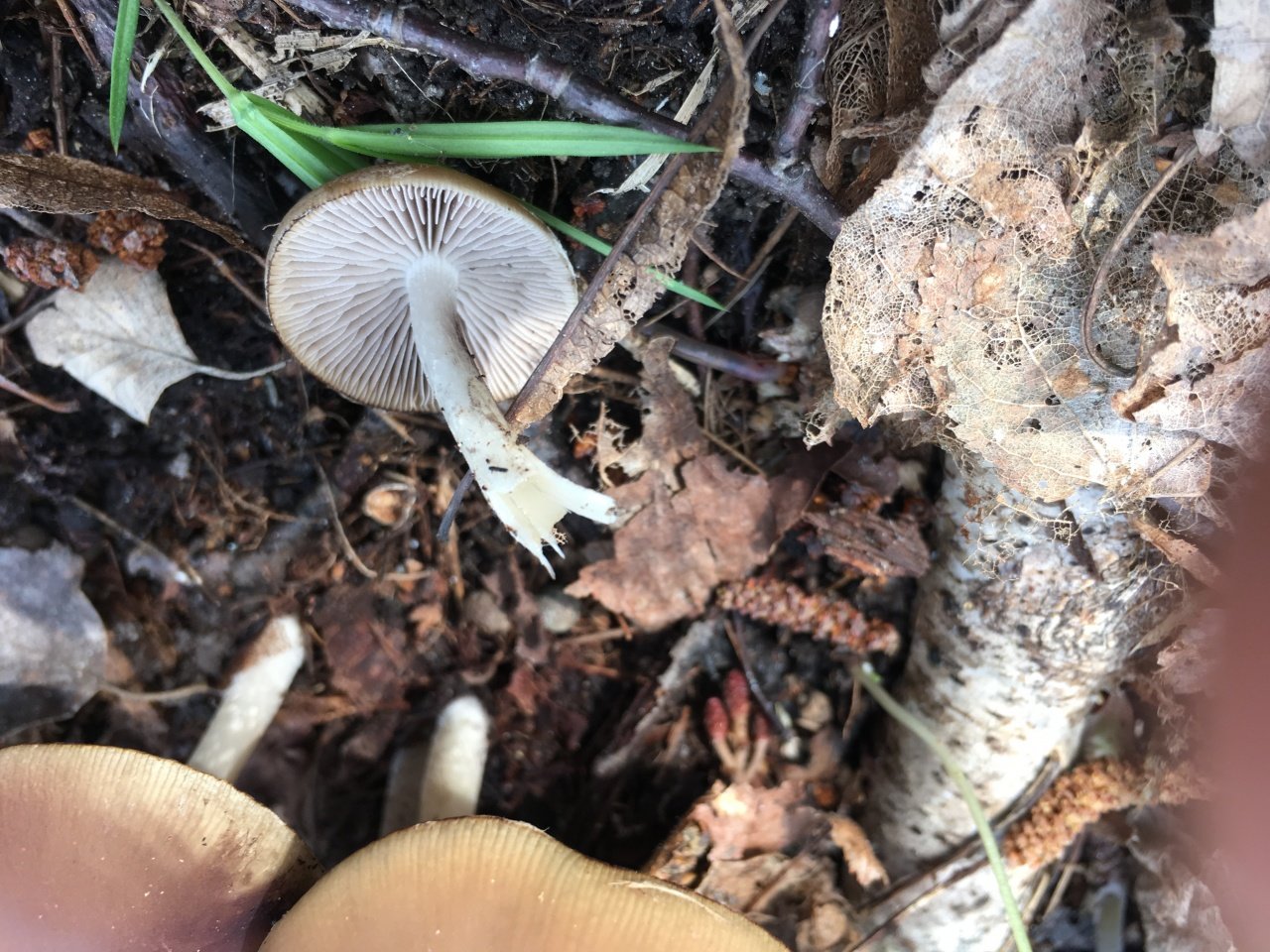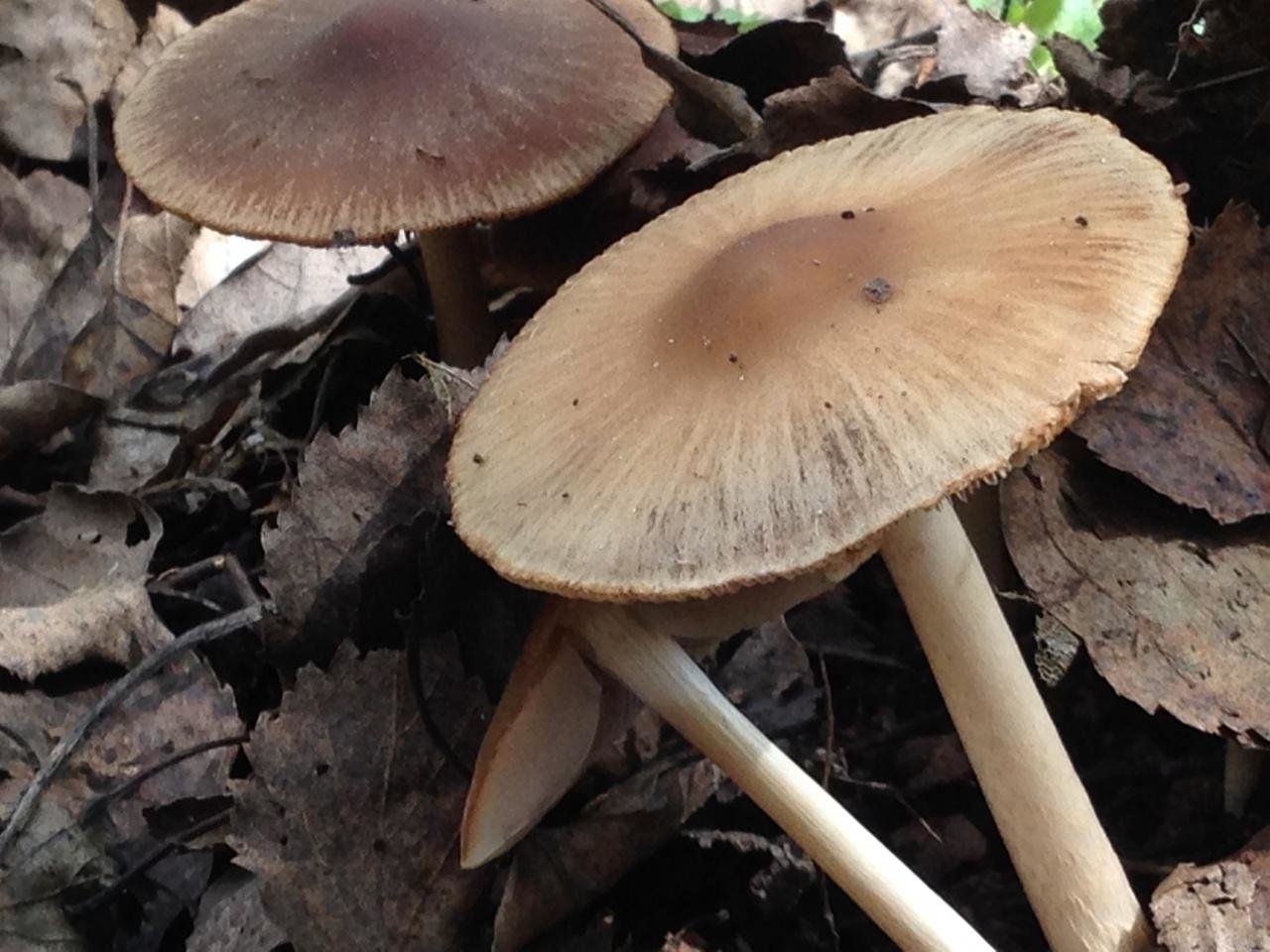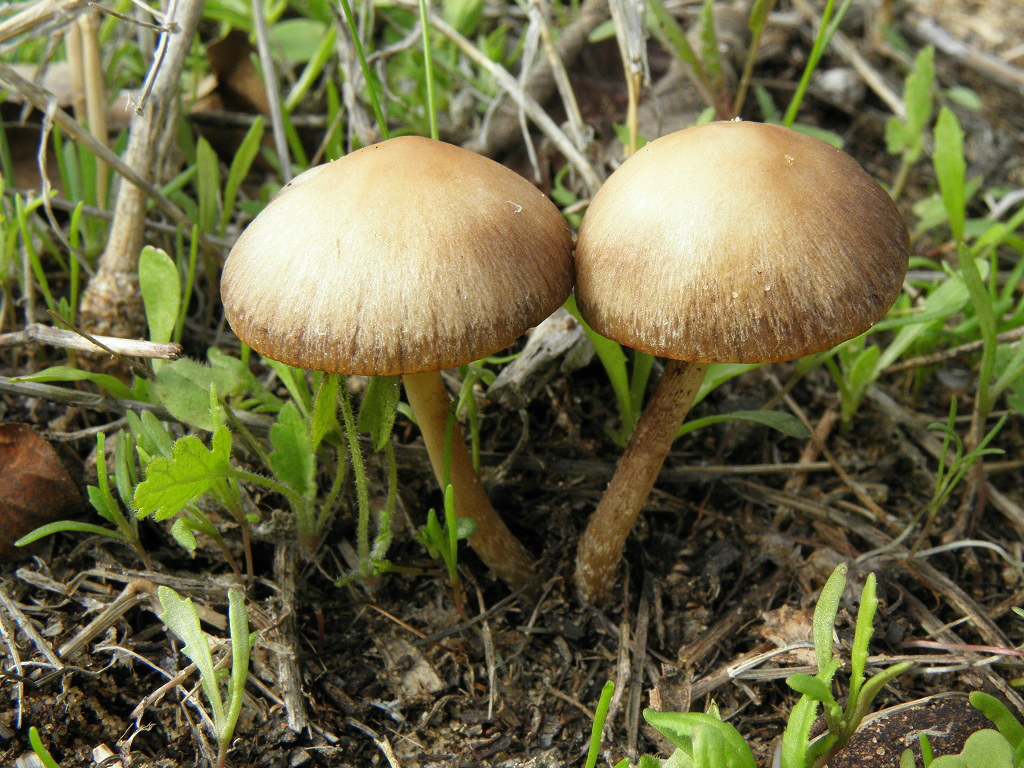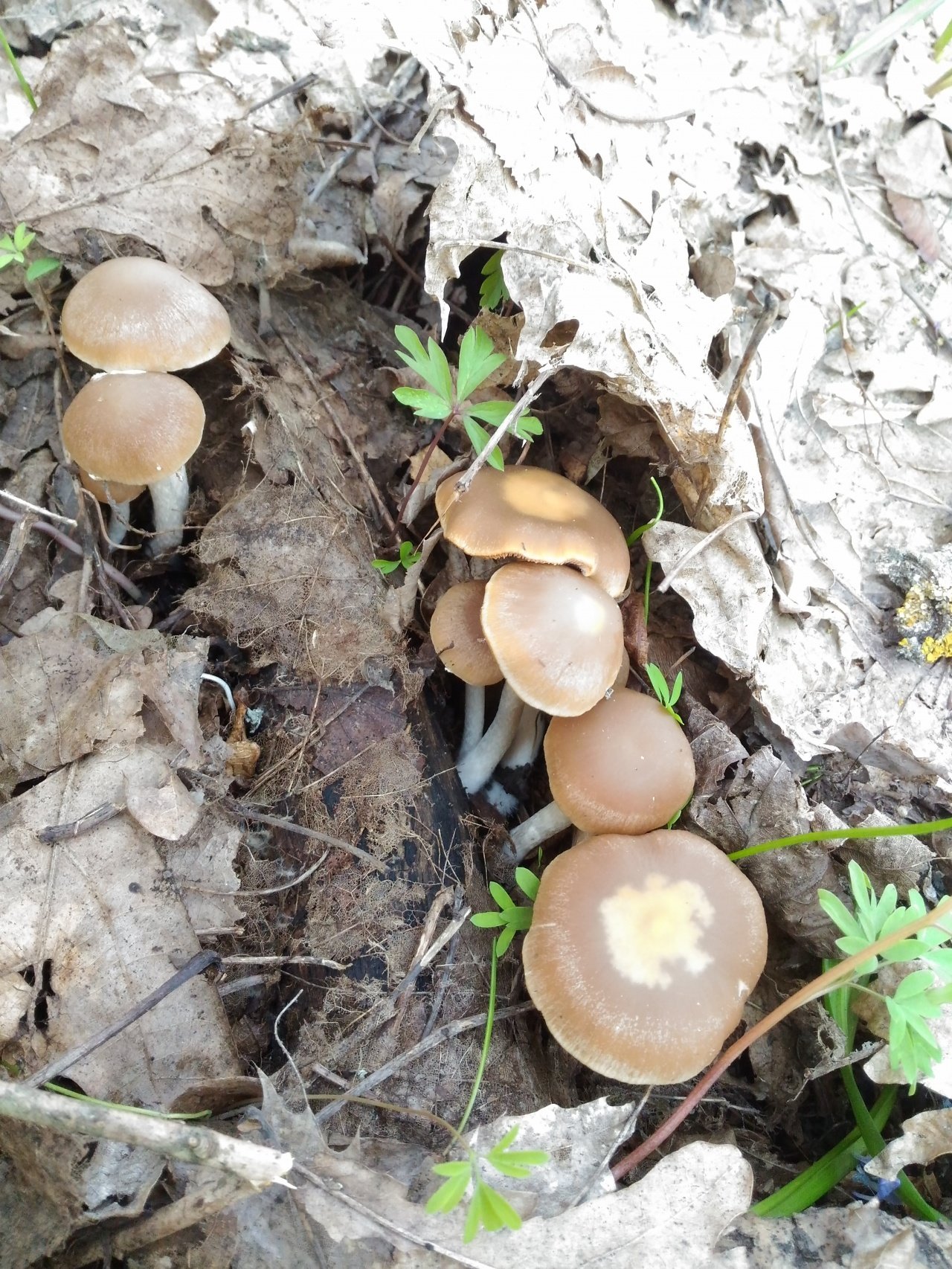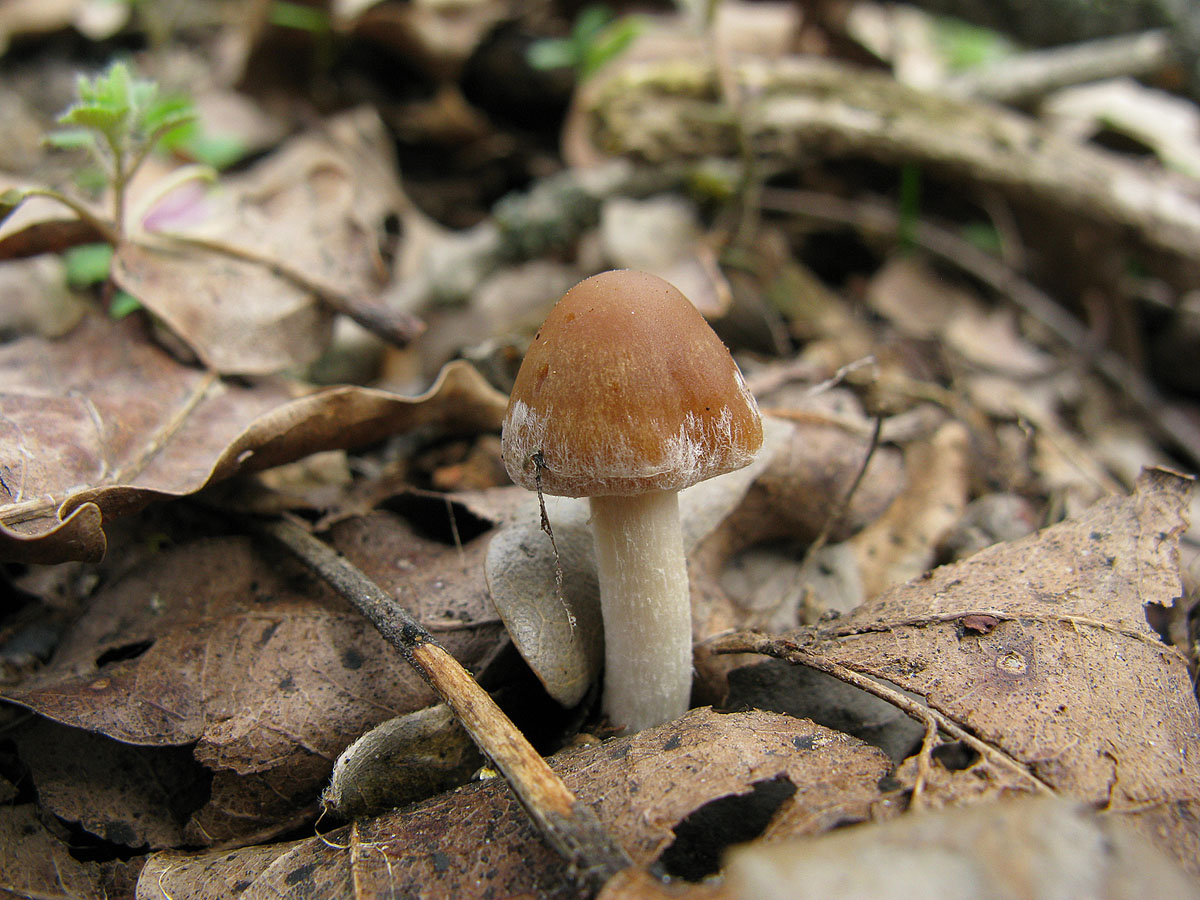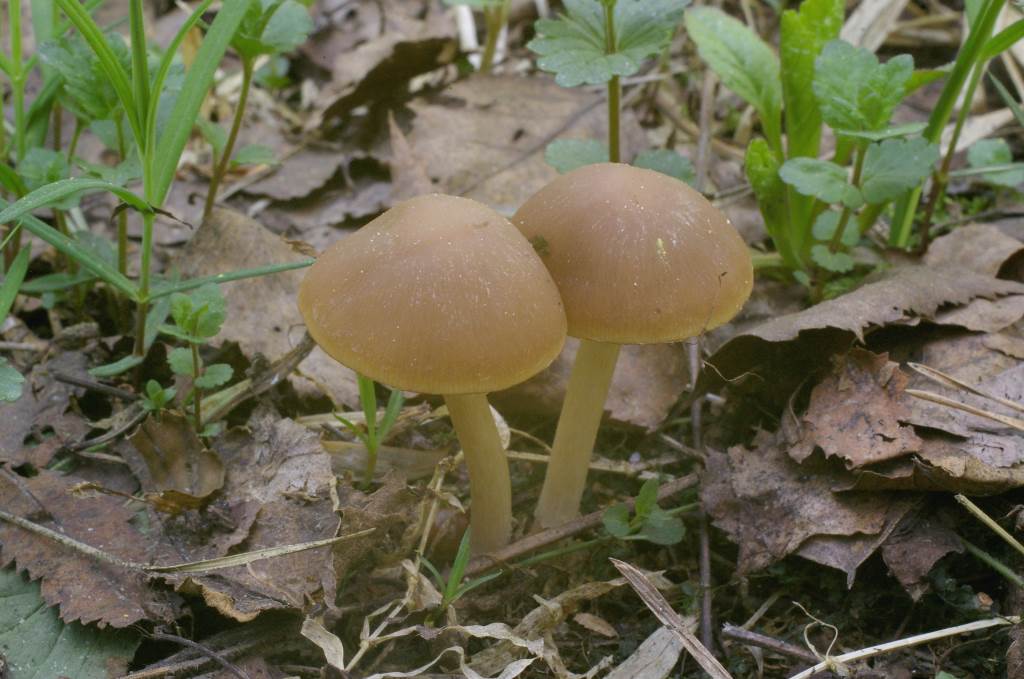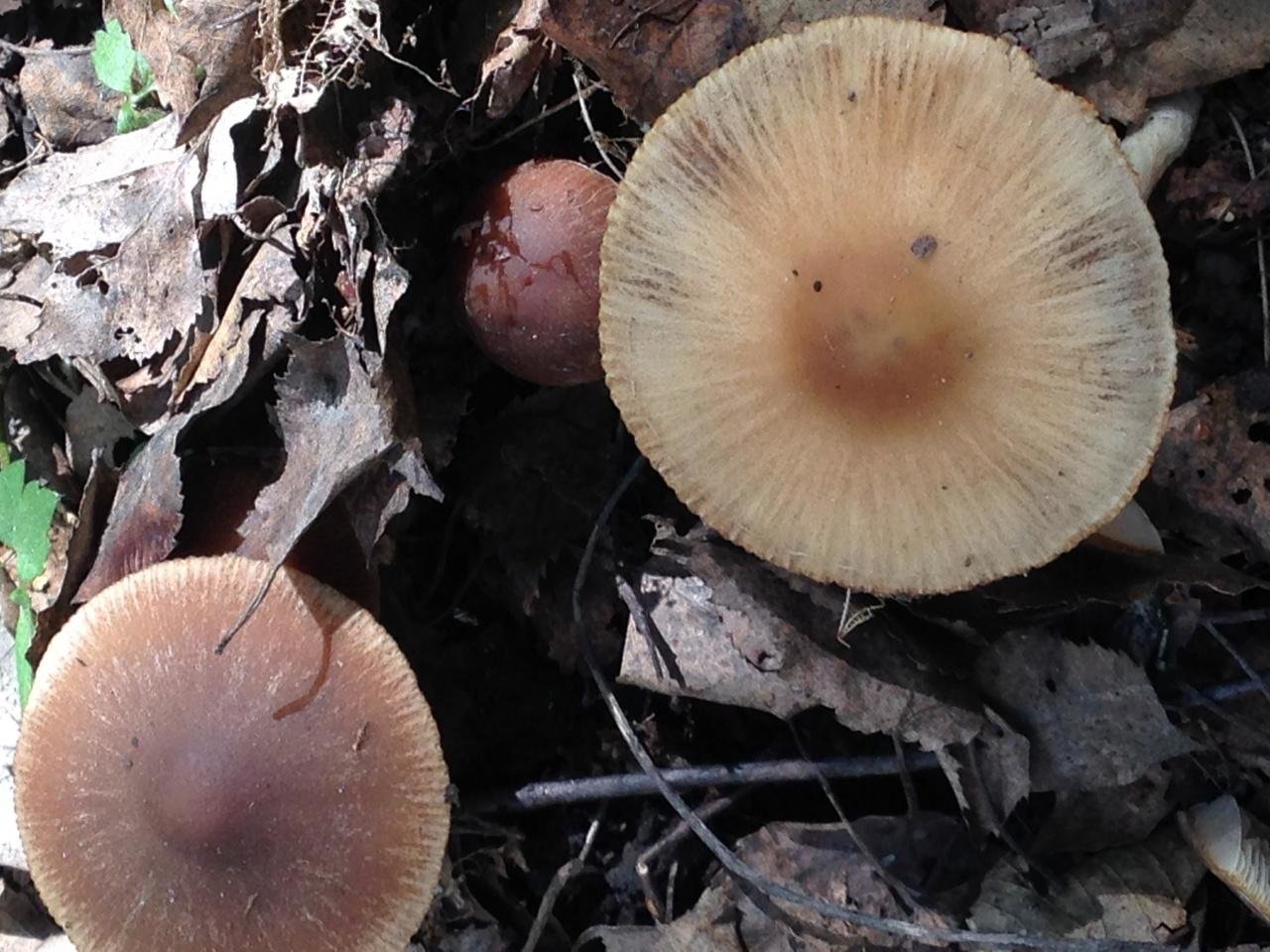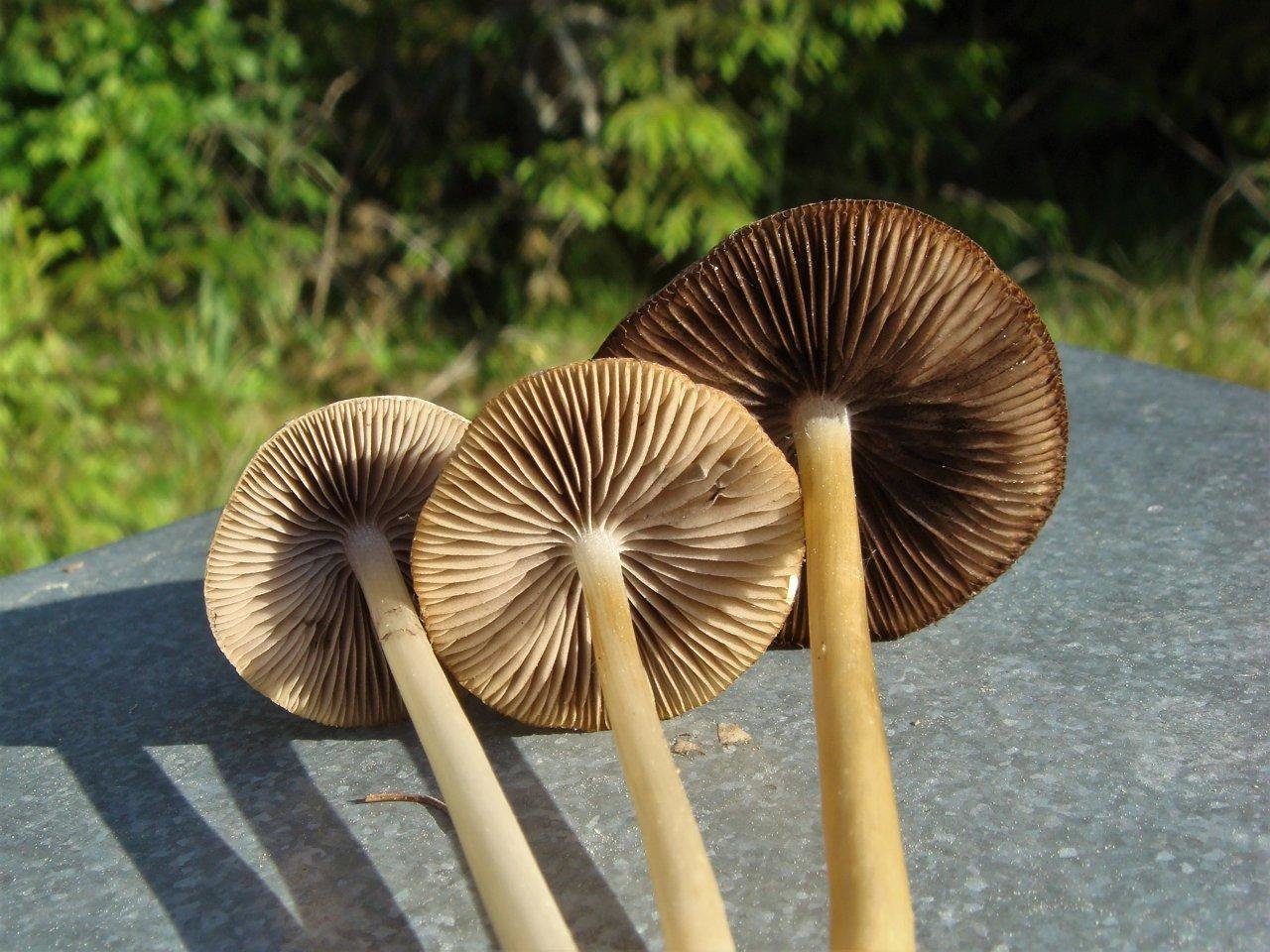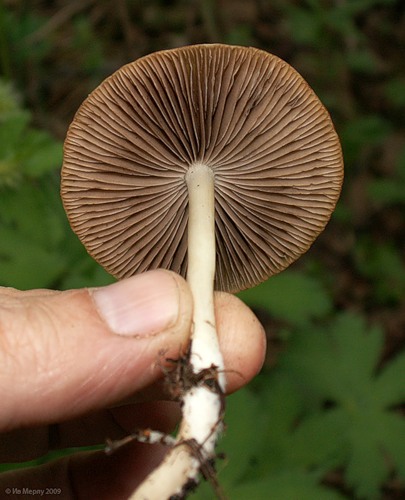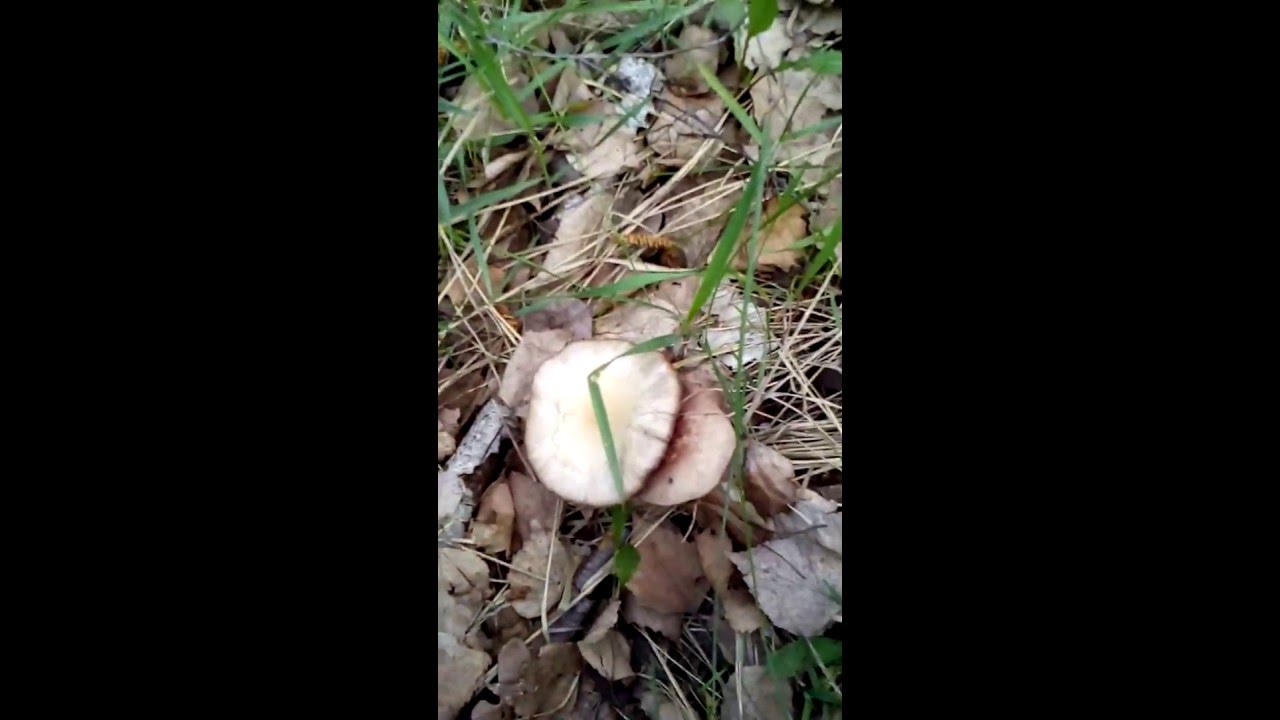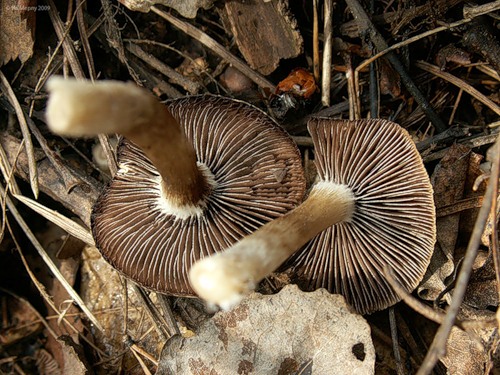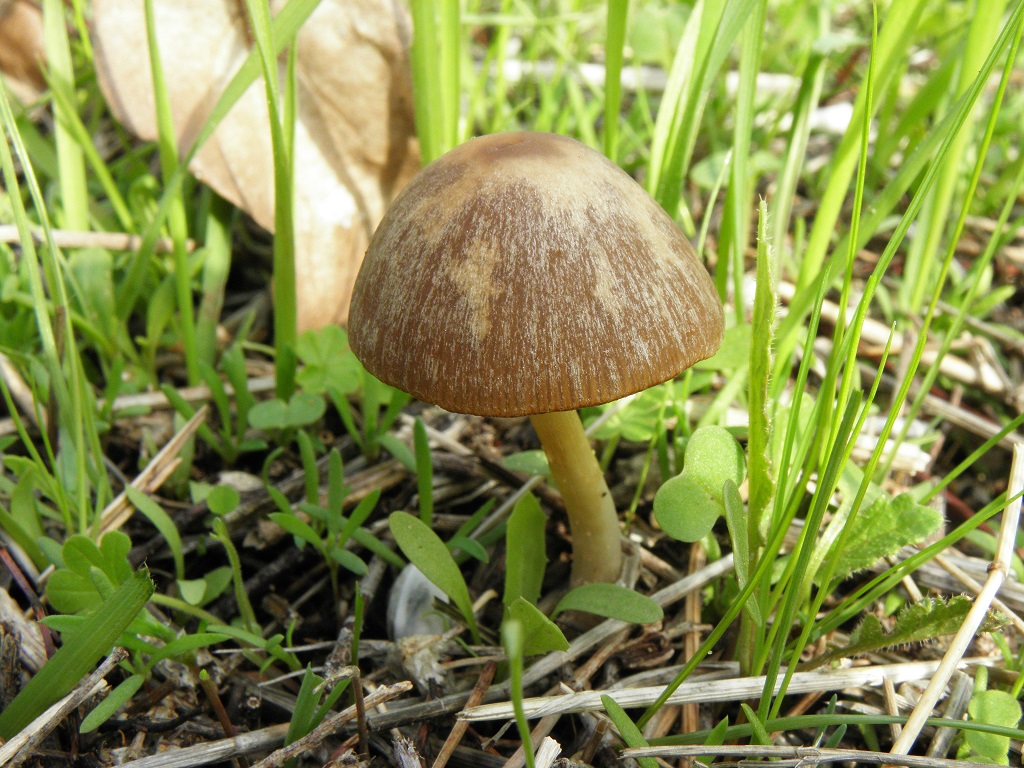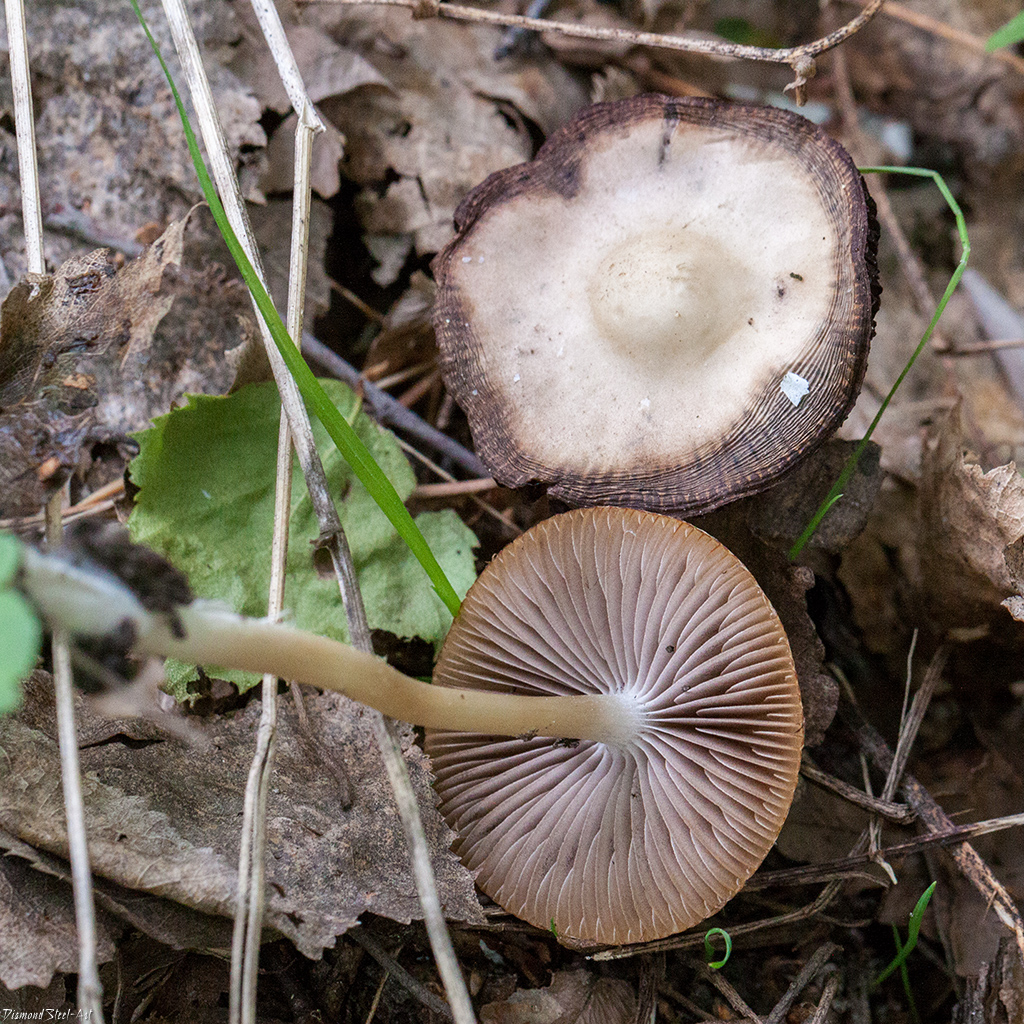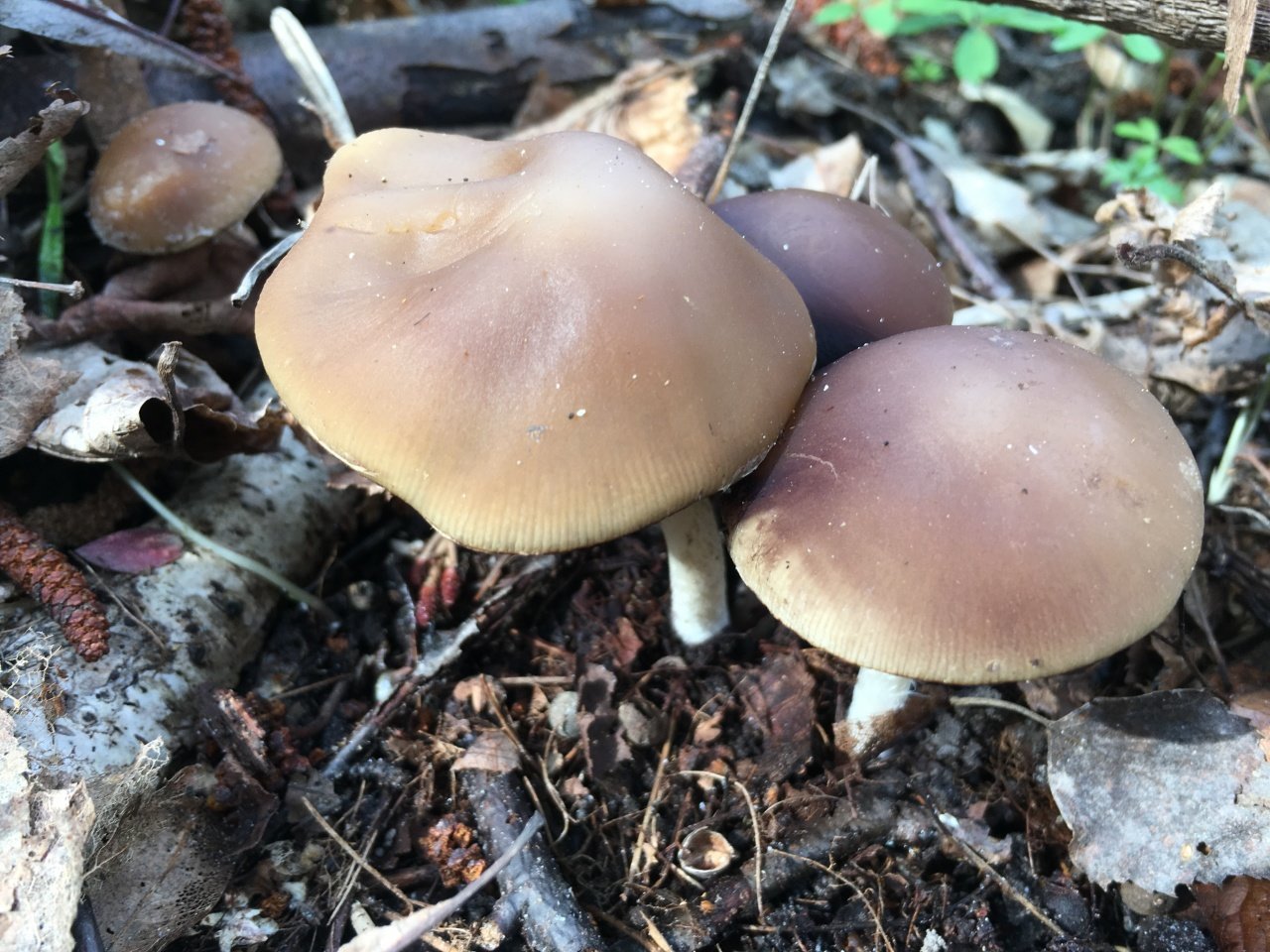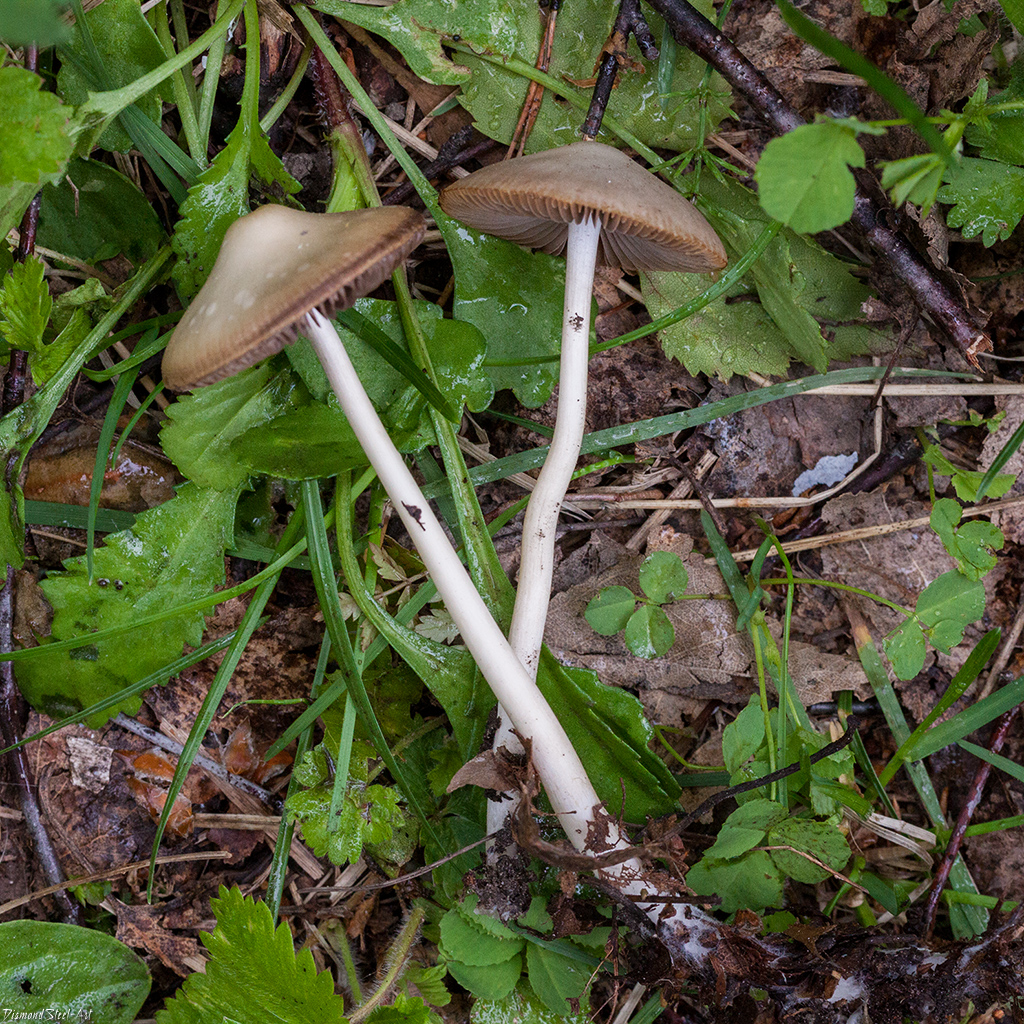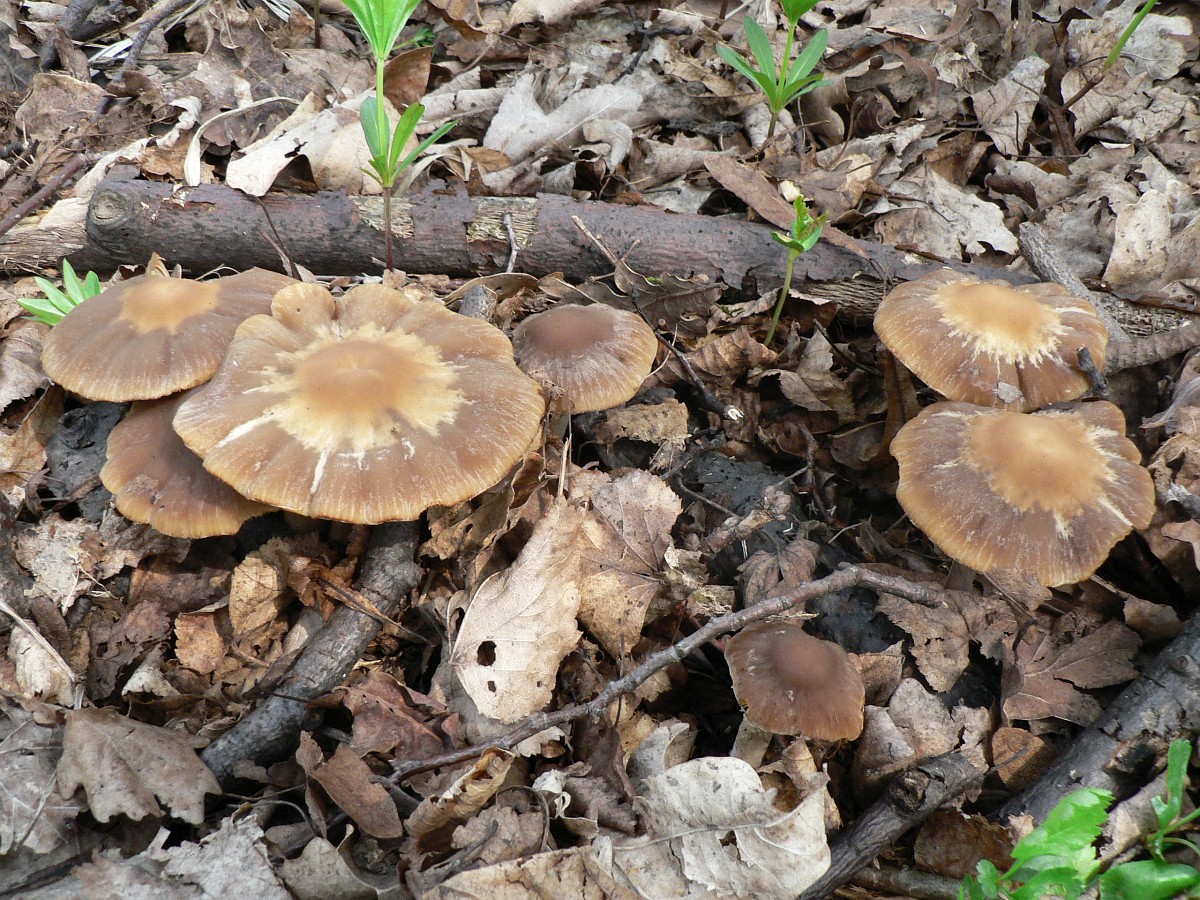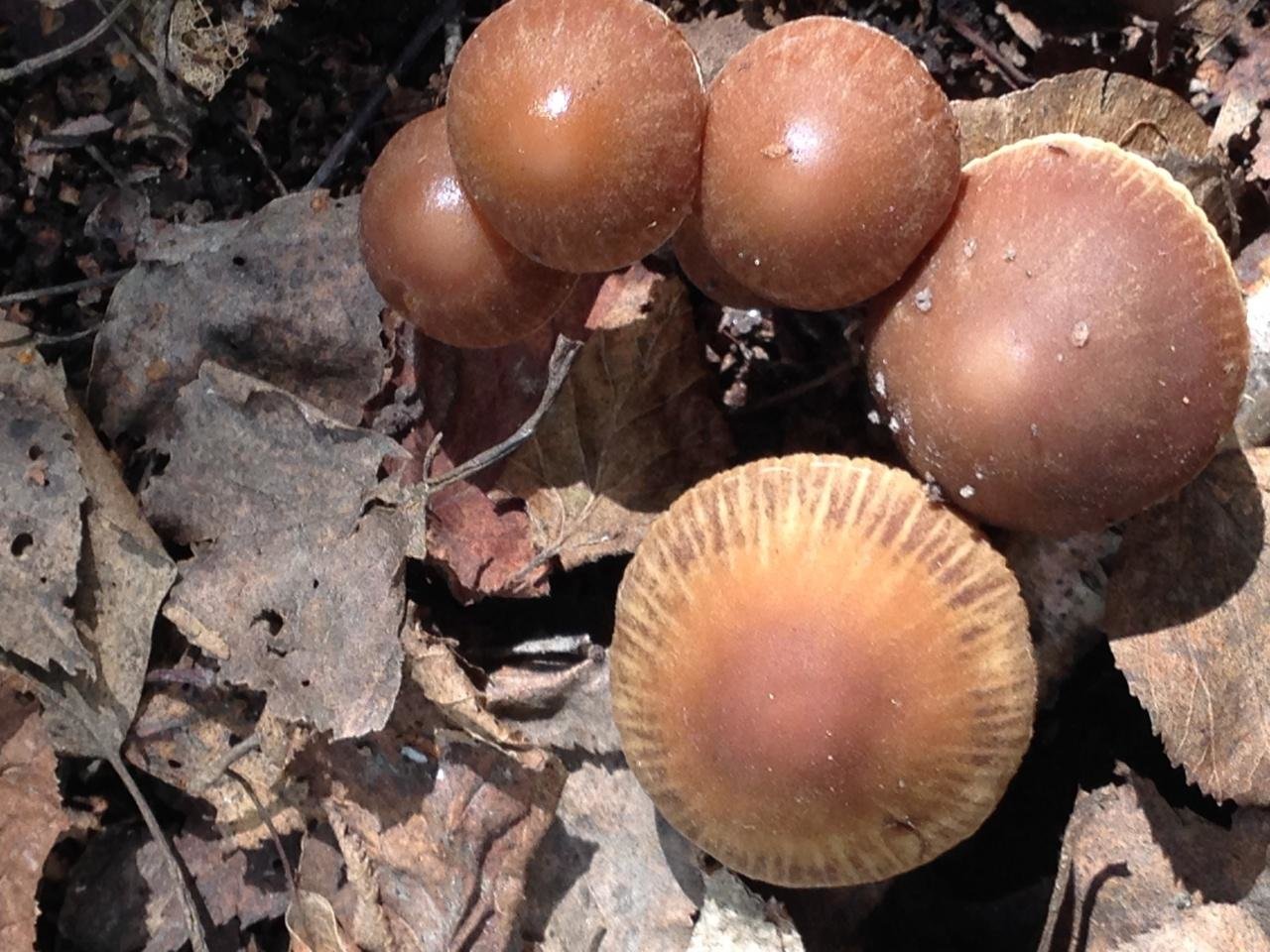Accepted views
- Psathyrella aquatica J.L. Frank, Coffan, & Southworth 2010
- Psathyrella ammophila (Durieu & Lév.) P. D. Orton 1960
- Psathyrella asperospora (Cleland) Guzmán, Bandala & Montoya 1991
- Psathyrella atomatoides (Peck) A. H. Sm. 1972
- Psathyrella atrolaminata Kits van Wav. 1981
- Psathyrella badiovestita P. D. Orton 1960
- Psathyrella bifrons (Berk.) A. H. Sm. 1941
- Psathyrella bipellis (Quél.) A. H. Sm. 1946
- Psathyrella borgensis Kits van Wav. 1987
- Psathyrella candolleana (Fr.) Maire 1913 - Psathyrella Candolle
- Psathyrella canoceps (Kauffman) A. H. Sm. 1941
- Psathyrella caput-medusae (Fr.) Konrad & Maubl. 1948
- Psathyrella cernua (Vahl) M. M. Moser 1984 - Fragile drooping
- Psathyrella chondroderma (Berk. & Broome) A. H. Sm. 1941
- Psathyrella clivensis (Berk. & Broome) P. D. Orton 1960
- Psathyrella conopilus (Fr.) A. Pearson & Dennis 1949 - Fragile conical, or Psatirella blackish
- Psathyrella coprophila Watling 1971
- Psathyrella corrugis (Pers.) Konrad & Maubl. 1948 - Fragile wrinkled
- Psathyrella cotonea (Quél.) Konrad & Maubl. 1949
- Psathyrella dennyensis Kits van Wav. 1987
- Psathyrella dunensis Kits van Wav. 1985
- Psathyrella echinata (Cleland) Grgur. 1997
- Psathyrella fatua (Fr.) P. Kumm. 1949 - Tasteless fragile
- Psathyrella fibrillosa (Pers.) Maire 1938 - Psathyrella fibrillosa
- Psathyrella flexispora T. J. Wallace & P. D. Orton 1960
- Psathyrella friesii Kits van Wav. 1977
- Psathyrella frustulenta (Fr.) A. H. Sm. 1941
- Psathyrella fusca (Schumach.) M. M. Moser 1952
- Psathyrella gordonii (Berk. & Broome) A. Pearson & Dennis 1948 - Psatirella Gordon
- Psathyrella gossypina (Bull.) A. Pearson & Dennis 1948 - Cotton Psathyrella
- Psathyrella gracilis (Fr.) Quél. 1872 typus - Psatirella graceful, or Fragile slender
- Psathyrella hirta Peck 1897
- Psathyrella incerta (Peck) A. H. Sm. 1972
- Psathyrella laevissima (Romagn.) Singer 1969
- Psathyrella leucotephra (Berk. & Broome) P. D. Orton 1960
- Psathyrella longicauda P. Karst. 1891
- Psathyrella lutensis (Romagn.) M. M. Moser 1955
- Psathyrella macquariensis Singer 1959
- Psathyrella maculata (C. S. Parker) A. H. Sm. 1972
- Psathyrella marcescibilis (Britzelm.) Singer 1951
- Psathyrella microrhiza (Lasch) Konrad & Maubl. 1948 - Half-covered fragile woman
- Psathyrella mucrocystis A. H. Sm. 1972
- Psathyrella multipedata (Peck) A. H. Sm. 1941 - Psatirella centipede, or Fragile many-legged
- Psathyrella murcida (Fr.) Kits van Wav. 1985
- Psathyrella narcotica Kits van Wav. 1971
- Psathyrella noli-tangere (Fr.) A. Pearson & Dennis 1948
- Psathyrella ocellata (Romagn.) M. M. Moser 1967
- Psathyrella olympiana A. H. Sm. 1941
- Psathyrella panaeoloides (Maire) M. M. Moser 1967
- Psathyrella pannucioides (J. E. Lange) M. M. Moser 1967
- Psathyrella pellucidipes (Romagn.) M. M. Moser 1978
- Psathyrella pennata (Fr.) A. Pearson & Dennis 1948
- Psathyrella phegophila Romagn. 1985
- Psathyrella piluliformis (Bull.) P. D. Orton 1969 - Psatirella water-loving, or Hydrophilic fragile
- Psathyrella ploddensis Kits van Wav. 1987
- Psathyrella polycystis (Romagn.) Romagn. 1982
- Psathyrella populina (Britzelm.) Kits van Wav. 1985
- Psathyrella pseudobifrons Romagn.
- Psathyrella pseudocasca (Romagn.) Kits van Wav. 1982 - Psatirella is oldish
- Psathyrella pseudocorrugis (Romagn.) Bon 1983
- Psathyrella pseudogordonii Kits van Wav. 1985
- Psathyrella pseudogracilis (Romagn.) M. M. Moser 1967
- Psathyrella pygmaea (Bull.) Singer 1951 - Psatirella pygmy
- Psathyrella romseyensis Kits van Wav. 1987
- Psathyrella rostellata Örstadius 1986
- Psathyrella sacchariolens Enderle 1984
- Psathyrella sarcocephala (Fr.) Singer 1951 - Chestnut fragile
- Psathyrella solitaria (P. Karst.) Örstadius & Huhtinen 1996
- Psathyrella spadicea (Schaeff.) Singer 1951 - Psatirella brown-red
- Psathyrella spadiceogrisea (Schaeff.) Maire 1937 - Psatirella brown-gray, or Fragile chestnut-gray
- Psathyrella sphaerocystis P. D. Orton 1964
- Psathyrella sphagnicola (Maire) J. Favre 1937 - Psathyrella sphagnum
- Psathyrella spintrigera (Fr.) Konrad & Maubl. 1949 - Psatirella striped ring
- Psathyrella spintrigeroides P. D. Orton 1960
- Psathyrella stellata (Romagn.) Romagn. 1983
- Psathyrella stercoraria (Kühner & Joss.) Arnolds 1972
- Psathyrella tephrophylla (Romagn.) M. M. Moser 1955
- Psathyrella trepida (Fr.) Gillet 1878
- Psathyrella typhae (Kalchbr.) A. Pearson & Dennis 1948
- Psathyrella umbrina Kits van Wav. 1982
- Psathyrella vinosofulva P. D. Orton 1960
- Psathyrella vyrnwyensis Kits van Wav. 1987
Description of the species
The cap has a diameter of 3-6 cm, sometimes up to 9 cm, at first bell-shaped, later convex, later convex-outstretched. A distinctive feature of the species is at first a whitish-yellowish, later with purple edges, a cap with white flakes along the edge and an even white-cream leg. In addition, thin radial fibers are often visible on the surface of the cap.
The leg has a height of 3-8 cm, thickness from 3 to 7 mm, fibrous, slightly widened near the base, brittle, white-cream with a weak flocculent bloom in the upper part.
Pulp: at first whitish, later yellowish, in young specimens without a special smell and taste, in mature and old mushrooms - with an unpleasant odor and bitter taste.
The plates are adherent, frequent, narrow, at first whitish, later gray-violet, gray-pink, dirty brown, gray-brown or dark purple.
Variability. The cap color can range from cream-white to yellowish to pinkish-cream in juveniles and yellow-brown and purple-edged in mature specimens.
Similar species. Psatirella Candolla in shape and size is similar to the golden yellow plyute (Pluteus luteovirens), which is distinguished by a golden yellow cap with a darker center.
Conditionally edible, since only the youngest specimens can be eaten and no later than 2 hours after collection, in which the color of the plates is still light. Mature specimens produce black water and a bitter taste.
Psatirella water-loving

Hat (diameter 3-7 cm): usually yellowish or light brown, with a slight tubercle and often cracked and uneven edges. It has the shape of a bell, which eventually changes to almost flat. Dry and smooth to the touch.
Leg (height 3-11 cm): slightly lighter than the cap, hollow, dense and curved, with a mealy bloom along the entire length. Slightly velvety to the touch.
Plates: light beige, with time they become rich brown. They adhere firmly to the leg.
Flesh: brownish, soft, thin, watery. No pronounced odor, the taste is very bitter.
Doubles: none.
The psatirella water-loving mushroom grows from late August to early November in Eurasia and North America.
Other names: hydrophilic psatirella, hydrophilic fragile, spherical psatirella, watery pseudo-foam.
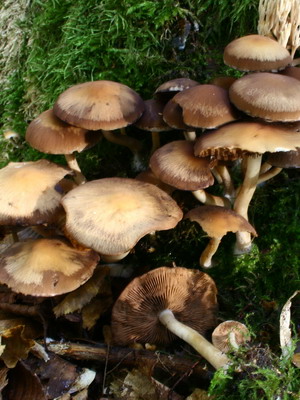
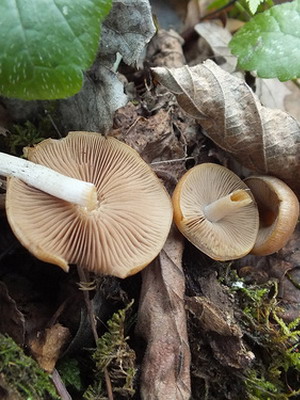
Where can you find it: on damp stumps and the dust of dead deciduous trees.
Eating: due to its low taste, it is practically not consumed.
Application in traditional medicine: not applicable.
Psatirella Candolla
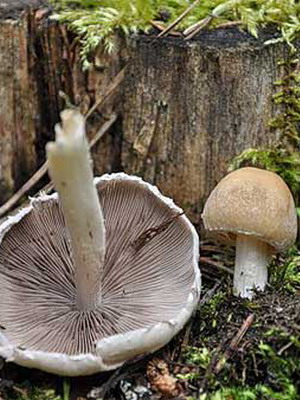
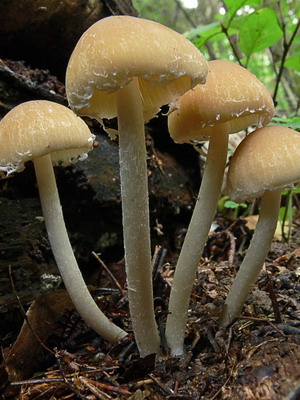
Hat (diameter 4-10 cm): cream or light brown, very fragile, over time it changes from a hemispherical or bell-shaped to almost spread. Young mushrooms of psatirella Candoll may have small brownish scales. The edges are wavy, covered with cracks; there is usually a small tubercle in the center.
Stem (height 4-11 cm): very smooth, usually white, occasionally brown. It has a slight thickening at the base and slight pubescence along its entire length. Like the hat, it is very fragile.
Plates: frequent and narrow, adhere tightly to the stem. Young mushrooms are light, old ones are dark brown.
Flesh: brittle, white. The subtle scent can only be felt at very close range.
Doubles: brown-gray psatirella (Psathyrella spadiceogrisea), which has a darker cap and does not grow in or near trees, but exclusively in the grass.
Application in traditional medicine: not applicable.
Other names: Candoll's pseudo-froth, Candoll's fragile girl.
The psatirella Candoll mushroom grows from late May to mid-October in the countries of the Eurasian continent and North America.
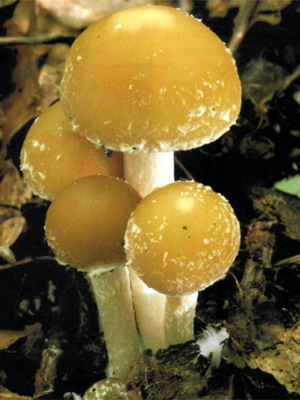
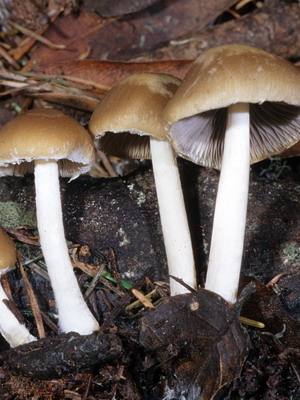
Where can you find it: on stumps, next to or on trees. Almost always found only in deciduous forests.
Eating: practically not consumed, as it requires complex heat treatment.
Psathyrella conopilus
Category: inedible.
Leg (height 6-22 cm): hollow, very fragile, white.
Flesh: thin, light brown.
Plates: gray in young mushrooms, almost black in old ones.
Hat (diameter 3-8 cm): yellow, brown or brown, conical. Smooth, with fine grooves.
The usual conical shape of the cap with characteristic grooves for the psatirella conical satyrella (Psathyrella conopilus)
Doubles: none.
When it grows: from early August to mid-October in Europe and the Far East.
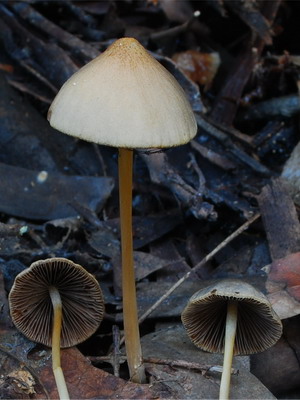

Psatirella conic grows on garbage or sawdust in parks, on roadsides. It can often be found in urban areas.
Eating: not consumed.
Application in traditional medicine: not applicable.
Other names: conical brittle, blackish psatirella.
Morphology
The fruiting bodies are small or medium-sized, with a central stem position.
The cap is thin, hygrophane, at first spherical, bell-shaped or cone-shaped, can open up to flat, the edges are often grooved, the color is from whitish to various brown shades.
The pulp is thin, fragile.
The stem is long and thin, brittle, fibrous, with a cavity, usually the same color as the cap or lighter in color. The surface can be felt or scaly.
The plates are adherent or loose, at first light, then darken and become brown, violet-brown or black, usually with a lighter edge.
The remains of the bedspread are noticeable on the surface and especially along the edges of the cap, cobweb or filmy, the ring and volva are usually absent, there is rarely a ring on the leg.
Dark brown, purple or almost black spore powder.
Spores are dark purple to black, usually smooth, with occasional germination. There are cheilocystids, their shape can be varied: bottle-shaped, saccular, clavate, with a coracoid outgrowth, sometimes inlaid with crystals.
Water-loving psatirella
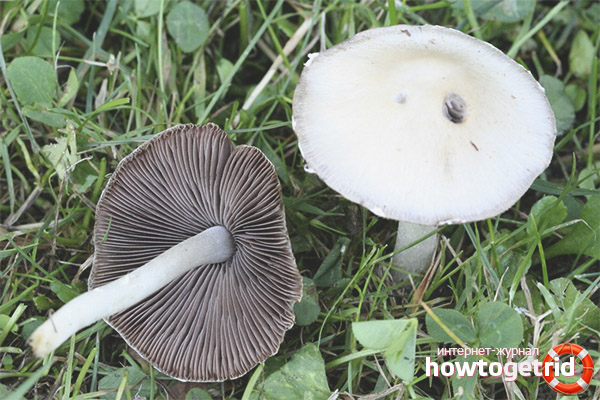
- This type of fruit has a cap no more than 7cm in diameter. It can often be light brown or yellowish in color. You can also see a small bump on it. The hat in most cases has a cracked structure and uneven edges.
- The mushroom is shaped like a bell. As the fruiting body ages, the hat becomes almost flat. It can be said to be smooth and dry to the touch. The leg can be up to 11 cm in height. It is distinguished by a lighter color, in contrast to the hat.The leg is hollow, curved and quite dense. A mealy coating is present along the entire length. It is velvety to the touch.
- As for the plates, they are colored light beige. After a sufficient amount of time, they acquire a brown tint. The plates fit quite tightly to the stem. The pulp is brown in color. It is watery, thin and soft. The taste is bitter, and the aroma is practically nonexistent. As for similar species, they are absent.
- In most cases, such mushrooms begin to bear fruit from the end of summer until the first frost. Most often found in North America and Eurasia. Also, the mushroom in question has several secondary names. It is often called hydrophilic brittle and psatirella, spherical psatirella, watery pseudo-foam.
The discussed fruiting body belongs to rather interesting mushrooms. Such a specimen is very rare. In addition, depending on weather conditions, it is able to change its appearance. This mushroom is not recommended for consumption. It requires special handling. There is also a high probability that you can pluck a poisonous or simply inedible double.
Psatirella candolla - description, where it grows, the poisonousness of the mushroom
Psatirella belongs to the Psatirella family and the Psatirella genus. The edibility of the fruit bodies of this variety has long been debated. Some consider them unsuitable for eating, others conditionally classify them as edible. The second option suggests that when carrying out a long and thorough heat treatment, the specimens can be tried. However, experienced lovers of quiet hunting are not advised to collect this variety, so as not to risk it.
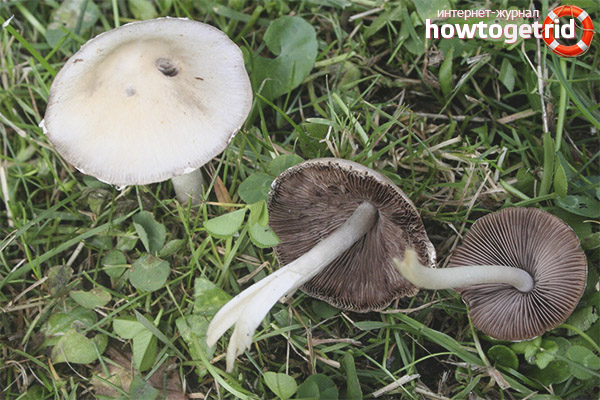
Description
- Psatirella Candolla is considered a conditionally edible fruiting body, as mentioned earlier. The top grows up to 10 cm in diameter, maximum, is painted in beige or cream tone. It is fragile, changes over the course of the life cycle, becoming not round, but almost flat. Young specimens are sometimes endowed with a brown scaly structure. The edges of the apex are uneven, wavy, all with cracks. There is a bump in the center of the hat.
- The plates on the back of the hat are located next to each other, they stick to the base and are pigmented from light to dark brown. It all depends on the age of a particular fruiting body. The leg grows up to 10 cm in height, it is smoothed and white. May be brownish on rare occasions. A seal is seen at the bottom. The leg itself is weak and often breaks.
- The soft part of the whole mushroom is painted with a whitish tone. A subtle aroma emanates from it. This type of mushroom has a twin called brown-gray psatirella. This twin is dark, growing next to trees in the grass. The Candoll mushroom is not used in folk medicine. It has other names, such as fragile or false froth.
- Growth begins at the end of the spring season and continues until mid-autumn. The nature of the growth is colonial, but the groups are not too voluminous. It is necessary to look for mushrooms in North America and Eurasia. Fruit bodies grow directly on tree trunks and stumps. Often found in larch trees, as well as parks, courtyards and gardens. Heat treatment after harvest is very difficult, so the mushroom is practically not consumed as food.
This variety has distinctive characteristics. The cocoon, which remains after birth, is on the hat of the fruiting body. If these remains of the blanket are not present, then it is necessary to study the place of growth. Mushrooms settle on dead areas of trees, in particular on stumps. Also, there is no ring on the base.
If we compare Candoll, for example, with Agrotsibe, then the following should be said. Our variety has a darker spore powder. And this variety differs from other psatirella in its large size and light tone.
Also, the peculiar variability of Candoll should not be overlooked.External data may change depending on climatic conditions, temperature conditions in the morning and evening hours. Age and habitat are of no small importance. But you should know for sure that you will not confuse this species with edible mushrooms.
Water-loving psatirella

- This type of fruit has a cap no more than 7cm in diameter. It can often be light brown or yellowish in color. You can also see a small bump on it. The hat in most cases has a cracked structure and uneven edges.
- The mushroom is shaped like a bell. As the fruiting body ages, the hat becomes almost flat. It can be said to be smooth and dry to the touch. The leg can be up to 11 cm in height. It is distinguished by a lighter color, in contrast to the hat. The leg is hollow, curved and quite dense. A mealy coating is present along the entire length. It is velvety to the touch.
The discussed fruiting body belongs to rather interesting mushrooms. Such a specimen is very rare. In addition, depending on weather conditions, it is able to change its appearance. This mushroom is not recommended for consumption. It requires special handling. There is also a high probability that you can pluck a poisonous or simply inedible double.
Hunting and fishing in the Tver region
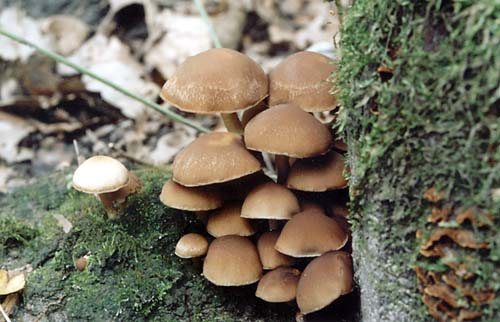
Hat: 2-6 cm in diameter, hemispherical in youth, with age it opens up to half-extended; white remnants of a private bedspread are often visible at the edges. The texture is hygrophilous, the color strongly depends on humidity, varying from chocolate brown (in conditions of sufficient humidity) to dirty cream in dry weather, often with peculiar zones of different colors. The flesh of the cap is thin, whitish-creamy, without any special smell or taste.
Plates: Frequent, adherent, light when young, darken to brown as the spores mature.
Spore powder: Violet brown.
Leg: Height 3-8 cm, thickness up to 0.7 cm, whitish, smooth, hollow. The pulp is relatively tough, not brittle.
Distribution: Occurs from early summer to mid-autumn on woody remains; grows, as a rule, in large colonies, growing together in bunches.
Similar species: Psatirella globose is just one of many "small brown mushrooms". This species differs from other representatives of the genus Psathyrella in the brown color of the cap (in wet weather) and the "format" of growth. A similar, although larger, gray-brown psatirella, Psathyrella spadiceogrisea, grows less densely. A summer honey fungus, Kuehneromyces mutabilis, also has a gigrofanny cap of a similar color, but there are more differences than similar signs. Finally, we must remember about another very similar brown mushroom that grows in late autumn under the same conditions (and almost on the same stumps) as hemispherical psatirella. This mushroom is distinguished mainly by the color of the spore powder: rusty brown versus the noble dark purple in psatirella. We are talking, of course, about the bordered gallery, Galerina marginata.
Edible: This mushroom does not belong to the poisonous, but it is not considered edible by anyone either.
Author's Notes: This relatively tricky psatirella once made fun of me. At the dawn of my mushrooming career, I found on an old spruce stump a whole colony of what seemed to me terrible Galerina Okaimlennaya (having learned about her a few days ago from Vishnevsky's book), immediately took several equally terrible pictures and began to show everyone, boasting of good luck. Everything would be fine, but when this site appeared (and on it, of course, Galerina Okaymelna's page), I received a letter from Marek Snovarsky himself, where he in a very delicate form expressed doubt that it was poisonous gallerina, not some stray psatirella. After a quick but very tough check, the "gallery" page was liquidated, and I remained to wait for next summer: in other words, the case was sent for further investigation. What this led to - you can guess for yourself.


